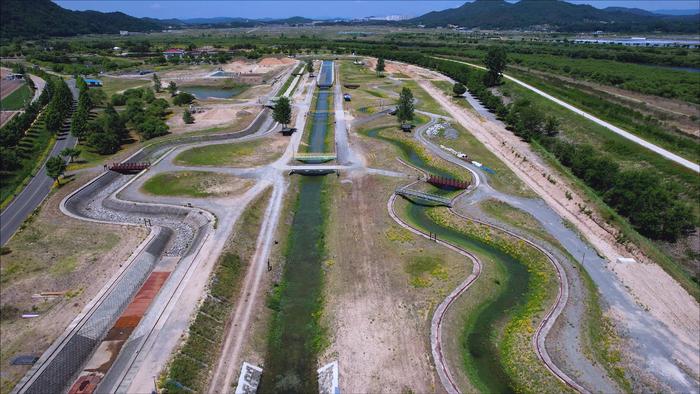With the recent flooding of New York and New Jersey by hurricane Sandy it is a good time to revisit New Orleans and the work that was done by the U.S. Army Corps of Engineers to protect it from future flooding. The new system is believed to be Category 5 storm proof. A Category 5 storm has winds up to 155 mph and involves complete roof failure on many residences and industrial buildings. Some complete building failures with small utility buildings blown over or away occurs. Flooding causes major damage to lower floors of all structures near the shoreline. Massive evacuation of residential areas may be required. The areas protected include New Orleans East, metro New Orleans, the 9th Ward, and St. Bernard Parish all of which were inundated during Katrina.
Katrina, which was the costliest natural disaster in US history prior to Sandy, was a Category 5 storm over the Gulf of Mexico but weakened to Category 3 as it came ashore; the many levees that surround New Orleans were breeched in many dozens of places. Rebuilding these levees was important and over 350 miles were rebuilt bigger and stronger. But in addition it was decided that a massive new structure would encircle the city to protect it from storm surge.
The Hurricane and Storm Damage Risk Reduction System(HSDRRS) is the largest design-build civil works project in US history and cost $1.5 billion. It includes the Inner Harbor Navigation Canal Surge Barrier (IHNC) the world’s largest Storm Surge Barrier with navigation gates at Bayou Bienvenue and the Gulf Intracoastal Waterway West (GIWW), a navigation gate at Seabrook vicinity of the Industrial Canal, the world’s most powerful Pump Station, and marsh enhancement with dredged organic material taken from dredging operations.
The Canal Surge Barrier is a two mile long, 32 feet high wall built on thousands of massive 6 foot diameter concrete piles driven 130 feet into the lakebed and 600 angled “batter” pilings reinforcing the backside of the barrier giving it a 100 foot wide footprint. Concrete caps on top of the wall bring the barrier to a height of 26 feet at high tide.
The world’s largest pump, with a 5,000 horsepower diesel engine powers 13 large pumps capable of bailing 150,000 gallons of water a second, enough water to fill the New Orleans Superdome in 30 minutes.
After Katrina, in an attempt to avoid a repeat of the disaster, the flood control system for New Orleans has been completely upgraded and reengineered making it the strongest flood control system ever built.





